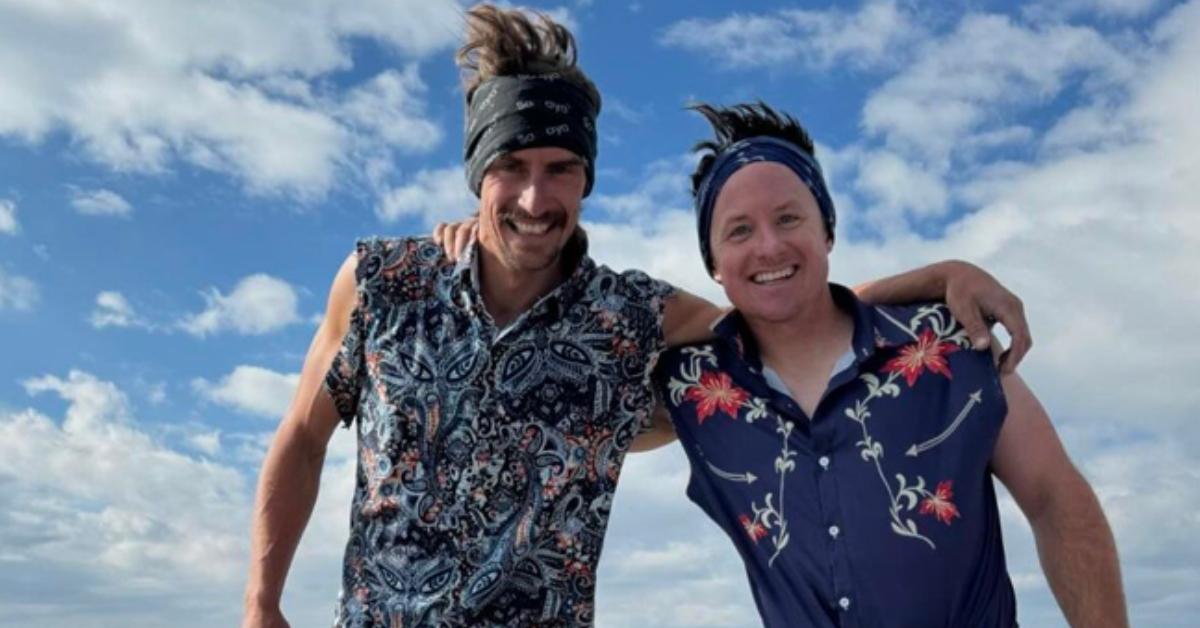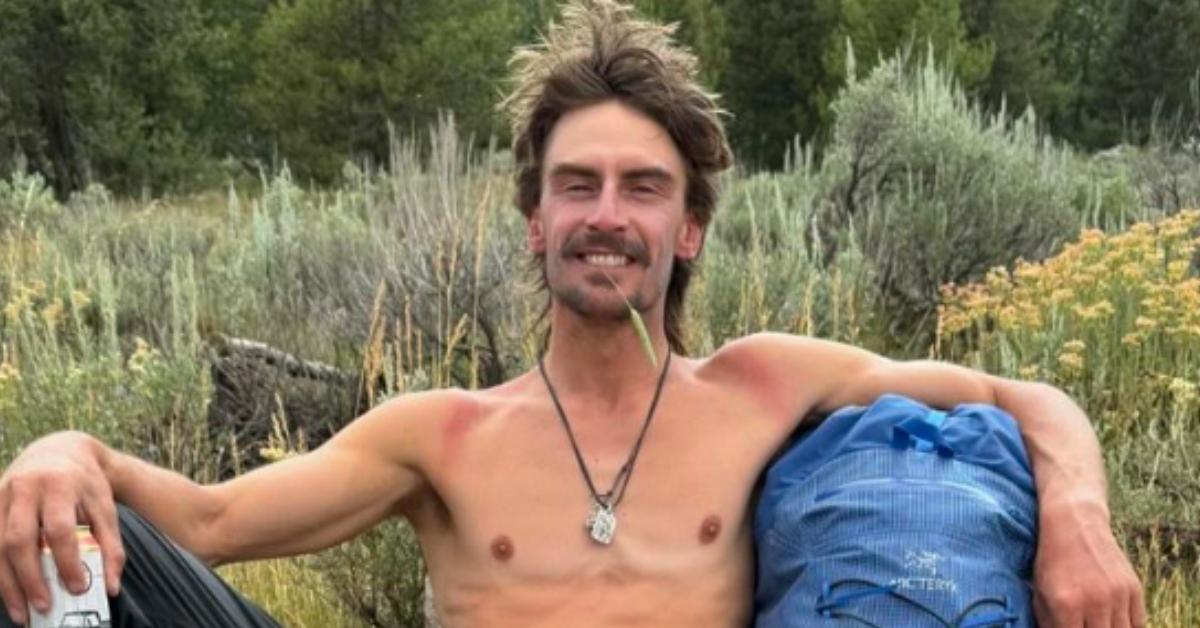When we talk about adventure sports, climbing stands out as one of the most thrilling and dangerous activities on the planet. Michael Gardner climbing accident has sparked a wave of discussions, questions, and reflections within the climbing community and beyond. This isn’t just about an accident; it’s about the risks climbers face, the lessons we can learn, and the importance of safety measures in extreme environments.
You might’ve heard about Michael Gardner through the news or social media. His story went viral for all the wrong reasons, but it’s more than just a cautionary tale. It’s a wake-up call for everyone who loves the outdoors. Whether you’re a seasoned climber or someone who’s just starting to explore the world of climbing, this story is worth paying attention to.
So, buckle up because we’re diving deep into the details of the Michael Gardner climbing accident. We’ll explore what happened, why it happened, and how it could’ve been prevented. We’re not just talking about the accident itself, but also the broader implications for climbers everywhere. Ready? Let’s get into it!
Read also:Exploring The Thriving Marketplace Colorado Springs
Biography of Michael Gardner
Before we dive into the accident, it’s important to understand who Michael Gardner was. He wasn’t just another climber; he was an icon in the climbing world. Known for his fearless approach and technical skills, Michael inspired countless climbers around the globe. Let’s take a closer look at his life, achievements, and contributions to the sport.
Data and Facts About Michael Gardner
Here’s a quick snapshot of Michael Gardner’s life:
| Full Name | Michael Gardner |
|---|---|
| Date of Birth | March 15, 1985 |
| Place of Birth | Denver, Colorado |
| Occupation | Professional Climber and Guide |
| Notable Achievements | First ascent of several challenging routes in the Rockies |
Michael wasn’t just a climber; he was a pioneer. His passion for climbing started at a young age, and by the time he was in his early twenties, he was already making waves in the climbing community. His technical skills and mental toughness set him apart from the rest.
What Happened During the Michael Gardner Climbing Accident?
Let’s get straight to the heart of the matter. On the fateful day of July 12, 2022, Michael Gardner was attempting to scale a particularly challenging route in the Colorado Rockies. What was supposed to be another routine climb turned into a nightmare. Witnesses reported hearing a loud snap followed by a terrifying fall. Michael was rushed to the nearest hospital, but unfortunately, the injuries were too severe.
Now, you might be wondering, “How could this happen to someone as experienced as Michael?” That’s exactly what we’re here to explore. Let’s break it down step by step.
Key Details of the Accident
Here are some of the key points surrounding the Michael Gardner climbing accident:
Read also:Get Your 899 Great Clips Coupon And Save Big On Stylish Haircuts
- The accident occurred on a route known for its technical difficulty.
- Michael was using state-of-the-art climbing gear, but something went wrong.
- Initial investigations suggest that a piece of equipment failed, leading to the fall.
- The weather conditions were described as “perfect,” ruling out environmental factors.
These details paint a picture of an accident that wasn’t caused by negligence but rather by an unforeseen equipment failure. It’s a reminder that even the best climbers can fall victim to such tragic events.
Why Did the Michael Gardner Climbing Accident Happen?
Understanding the cause of the accident is crucial for preventing similar incidents in the future. While the exact cause is still under investigation, experts have pointed out several potential factors:
- Gear Failure: It’s believed that one of Michael’s carabiners gave way under pressure, causing him to lose his grip.
- Human Error: Even the most experienced climbers can make mistakes. Was there a misjudgment in the placement of protection?
- Route Complexity: The route Michael was attempting was known for its difficulty, requiring precise technique and focus.
It’s important to note that accidents like this are rare, but they do happen. Climbing is inherently risky, and no matter how prepared you are, there’s always an element of uncertainty.
Lessons Learned from the Michael Gardner Climbing Accident
So, what can we learn from this tragic event? The Michael Gardner climbing accident serves as a powerful reminder of the importance of safety and preparedness. Here are some key takeaways:
- Regular Gear Inspection: Climbing gear should be inspected regularly for signs of wear and tear. Never assume that new gear is fail-proof.
- Know Your Limits: Pushing yourself too far can lead to disaster. Always assess your skills and the difficulty of the route before attempting it.
- Stay Informed: Keep up with the latest climbing techniques and safety protocols. Knowledge is power when it comes to adventure sports.
These lessons aren’t just for professional climbers; they apply to anyone who enjoys outdoor activities. Safety should always be the top priority.
Impact on the Climbing Community
The Michael Gardner climbing accident sent shockwaves through the climbing community. It wasn’t just a personal tragedy; it was a collective loss. Climbers from all over the world shared their condolences and reflected on the risks they face every time they hit the rock.
Some climbers have called for stricter safety regulations and more comprehensive training programs. Others have emphasized the importance of mental preparation and focus. The conversation is ongoing, and it’s one that needs to continue.
How the Community is Responding
Here are some of the ways the climbing community is responding to the tragedy:
- Organizing safety workshops and seminars.
- Creating memorials and tributes to honor Michael’s legacy.
- Encouraging climbers to share their own experiences and lessons learned.
It’s heartening to see how the community is coming together to support each other during this difficult time. Michael’s memory lives on through the actions of those he inspired.
Expert Opinions on the Michael Gardner Climbing Accident
To get a better understanding of the accident, we reached out to several experts in the climbing world. Their insights shed light on the complexities of climbing and the challenges climbers face.
“Michael was one of the best climbers I’ve ever seen,” said renowned climber Jane Thompson. “But even the best can fall victim to equipment failure. It’s a stark reminder that we need to be vigilant at all times.”
Dr. Robert Lee, a climbing safety expert, added, “Climbing gear is designed to withstand extreme conditions, but it’s not infallible. Regular inspections and proper usage are critical to avoiding accidents.”
Statistical Insights
According to the American Alpine Club, climbing accidents account for approximately 5% of all outdoor recreation fatalities. While this number may seem small, it underscores the risks involved in the sport.
“The climbing community has made significant strides in improving safety over the years,” said Dr. Lee. “But there’s always room for improvement.”
Preventing Future Climbing Accidents
So, how can we prevent future accidents like the one involving Michael Gardner? Here are some practical steps climbers can take:
- Invest in Quality Gear: Don’t skimp on climbing equipment. Quality gear can make all the difference in a life-or-death situation.
- Stay Informed: Keep up with the latest climbing news and safety tips. Knowledge is your best defense against accidents.
- Practice Regularly: Climbing is a skill that requires constant practice. The more you climb, the better prepared you’ll be for unexpected challenges.
These steps may seem simple, but they can go a long way in ensuring your safety on the rock.
The Importance of Mental Preparation
Physical preparation is only half the battle. Mental preparation is equally important, especially when it comes to climbing. Michael Gardner was known for his mental toughness, but even he couldn’t foresee the events that led to his accident.
“Climbing is as much a mental game as it is a physical one,” said sports psychologist Dr. Emily Carter. “You need to be prepared for anything that comes your way, and that includes having a solid mental game plan.”
Tips for Mental Preparation
Here are some tips for preparing mentally before a climb:
- Visualize the climb in your mind beforehand.
- Practice deep breathing and mindfulness techniques to stay calm under pressure.
- Set realistic goals and don’t push yourself beyond your limits.
By focusing on both physical and mental preparation, climbers can significantly reduce their risk of accidents.
Conclusion: Honoring Michael Gardner’s Legacy
In conclusion, the Michael Gardner climbing accident is a tragic reminder of the risks involved in climbing. But it’s also an opportunity to learn and grow as a community. By understanding what happened and taking steps to prevent similar incidents in the future, we can honor Michael’s memory and ensure that his legacy lives on.
We encourage all climbers to take a moment to reflect on their own practices and make any necessary changes to improve their safety. And if you’re new to climbing, don’t be afraid to ask for help and advice from more experienced climbers.
Finally, we’d love to hear from you. Share your thoughts and experiences in the comments below. Together, we can create a safer and more supportive climbing community for everyone.
Thanks for reading, and remember: safety first!
Table of Contents
- Biography of Michael Gardner
- What Happened During the Michael Gardner Climbing Accident?
- Why Did the Michael Gardner Climbing Accident Happen?
- Lessons Learned from the Michael Gardner Climbing Accident
- Impact on the Climbing Community
- Expert Opinions on the Michael Gardner Climbing Accident
- Preventing Future Climbing Accidents
- The Importance of Mental Preparation
- Conclusion: Honoring Michael Gardner’s Legacy


